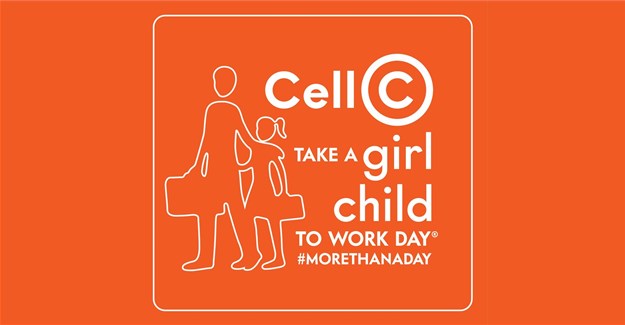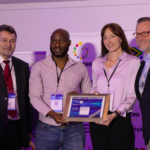Cell C’s holistic education initiative has changed over the years to use better technology to empower learners, expanded to include both boys and girls, and meet the challenges of the COVID-19 pandemic.
Now in its 18th year, Cell C’s Take a Girl Child to Work Day® initiative has been a resounding success, helping empower young girl school learners take charge of their futures and introduce them to opportunities they may not be aware that they have in their career paths. In just under two decades, the educational program has helped more than a million girls with their career development.
From its humble beginnings, Take a Girl Child to Work Day® is today regarded as one of South Africa’s largest collaborative acts of volunteerism, involving South African corporations, schools, government bodies and entrepreneurs.
This didn’t happen overnight, however; over its near two decade existence, the program has evolved and grown, taking advantage of tech trends – social media, remote learning, online platforms and more – to expand its reach to school learners (both boys and girls) and increase the reach of the program in order to help more of South Africa’s future leaders than ever before.
In 2017, for example, Cell C launched CellCgirl, a holistic educational platform, a free mentorship website and social media community, aimed at assisting learners aged between 15 and 24 in planning and navigating the world of work and life in general. The following year, under Cell C’s Human Capital Development and Transformation Chief Officer, Juliet Mhango’s guidance, Take a Girl Child to Work Day® took things a step further.
“Last year we examined Take A Girl Child To Work Day® and really assessed running the program over just one day and asked; ‘was one day really sufficient for the learners who participate to really get exposure to the corporate space and be inspired and empowered with tangible information and skills’,” says Mhango.
This led to Cell C launching the #MoreThanADay initiative in Take A Girl Child To Work Day®, which Cell C encouraged organisations and partners to extend the programme to host girl learners for three days in the workplace offering participants three workshops instead of just one. It also expanded the program to include learners in Grade 8 and 9 – only learners from Grades 10 to 12 had been included in the past.
“It’s had a huge impact on the program in terms of its effectiveness,” says Mhango. “Rather than just having a one-day workshop, we were able to immerse the learners into the different workspaces and introduce them to the corporate world. The feedback we received from learners was that they felt very empowered; beyond introducing them to these work environments and opportunities, we talked about their strengths and their aspirations, giving them more guidance in their career choices.”
This year Cell C’s Take a Girl Child to Work Day® program faced an unprecedented challenge in the form of the COVID-19 pandemic and the subsequent national lockdown. Because of government safety regulations during the lockdown, Cell C and its partners were unable to host learners on campuses and at government buildings. Mhango says that in the face of these obstacles, Cell C was determined to continue this valuable initiative – and for the first time include boy child learners.
“We were supposed to launch the program in May and then the pandemic hit, but we said we need to press ahead despite the challenges we face, so we need to evolve the model,” says Mhango. “The first workshop was a virtual workshop – and the remainder of the workshops this year will follow suit.
“We haven’t lost the learners. We’ve been able to hold a workshop on virtual platforms – both Cell C and our corporate partners,” she says.
In virtual workshops,learners are given access to computers or one large broadcasting screen and the classes are hosted at school classrooms and media centres, with all COVID-19 precautions being observed.
Mhango says that while the COVID-19 virus has severely impacted the school calendar and forced Take a Girl Child to Work Day® to pivot to a virtual model, it has also allowed Cell C’s empowerment and education program to expand its reach to more learners.
“In the past, Take a Girl Child to Work Day® reached mostly learners in the metros, but with the virtual workshops, we’ll be able now to include kids in the rural areas as well,” says Mhango.
“Going forward my thinking is – if we ever get back to some semblance of ‘normal’ after the COVID-19 outbreak – in the future we’ll be using a hybrid model of Take a Girl Child to Work Day®. The model will include learners who are able to attend on-campus workshops, and virtual workshops for those who cannot. This way we are able to reach children from all walks of life.”












